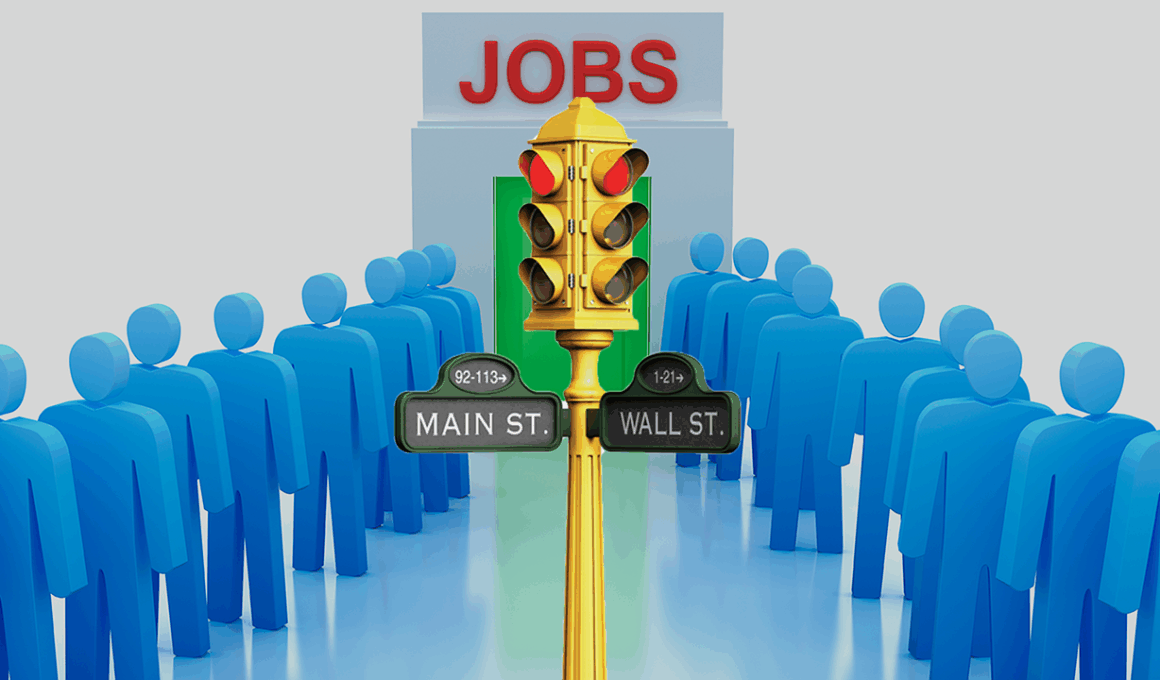The Impact of Minimum Wage Laws on Unemployment Rates
The relationship between minimum wage laws and unemployment rates remains a contentious topic within economic theory. Many economists argue that increasing the minimum wage results in higher unemployment rates, particularly among low-skilled workers. This phenomenon occurs because businesses may reduce hiring to manage increased labor costs. Others claim that a higher minimum wage can lead to greater worker productivity and a more motivated workforce. As workers earn more, they tend to spend more, which can stimulate economic growth. This nuance suggests that the potential adverse effects on employment may be offset by increased demand in local economies. Policymakers must weigh these opposing views carefully when developing wage legislation. To fully understand the implications of minimum wage laws, it is crucial to analyze various economic indicators. Some studies show mixed evidence, where regions with different minimum wage levels exhibit varying unemployment rates. Overall, clear patterns emerge when data from various states are assessed, showing both short-term layoffs and long-term economic benefits in different contexts.
In examining the factors influencing unemployment rates, it is essential to consider other variables alongside minimum wage controls. Economic conditions are pivotal, and factors like inflation, productivity, and macroeconomic policy also play significant roles. In many instances, areas experiencing economic growth may absorb the impacts of a minimum wage increase more efficiently. This growth can create jobs, allowing businesses to adjust to higher wages without laying off employees. Conversely, in regions experiencing recession or economic stagnation, companies may struggle to cover increased labor costs, leading to potential job cuts. As adjustments to wage policy occur, it is crucial for local governments to monitor these economic indicators to ensure that citizens maintain access to employment opportunities. Establishing programs aimed at enhancing job skills could effectively mitigate unemployment among vulnerable populations, encouraging businesses to adapt rather than terminate positions. Policymakers can initiate community discussions, allowing stakeholders to voice concerns and share experiences related to wage increases. By fostering a collaborative environment, the potential adverse effects on employment may be minimized as businesses and workers work together towards mutual benefits.
Job Market Adjustments Following Minimum Wage Increases
The effects of minimum wage increases on employment levels often manifest in various ways across diverse job markets. A significant increase may compel employers to rethink staffing strategies, leading to reductions in hours for employees or hiring fewer workers overall. Some industries may react more sharply than others; for instance, the fast-food sector, which typically relies on low-wage labor, might substantially alter its employment practices in response to wage hikes. Conversely, firms with higher profit margins may absorb the costs more comfortably, opting to retain their current workforce. Empirical research highlights differing responses across sectors, making it crucial to assess labor market dynamics closely. Additionally, as employers adjust their hiring practices, they may also invest more in automation to counterbalance rising labor costs. These adaptations pose challenges for workers, particularly those reliant on low-wage positions, as job opportunities can become scarcer. Nevertheless, the long-term consequences of raising the minimum wage often involve shifts in retail and service dynamics that eventually stabilize an economy as businesses adapt and innovate in response to changing wage expectations.
Moreover, studies exploring the impact of minimum wage laws on unemployment rates reveal the complexities of labor market responses over time. A longitudinal approach is essential, capturing both immediate and delayed reactions from businesses and workers. In the short-term, an increase in minimum wage can lead to an uptick in unemployment as businesses adapt to new cost structures. Yet, as local economies adjust, new market opportunities may surface, facilitating job growth and reducing unemployment rates. Workers, in turn, may experience increased job satisfaction due to improved pay, potentially translating into greater retention rates. Moreover, differences in geographic and economic contexts can shape the results, affirming that a one-size-fits-all approach to wage policy is ineffective. Policymakers must consider distinct regional circumstances, such as prevailing average wages, cost of living, and industry composition, to create effective wage legislation. By analyzing various case studies, insights can be gained regarding the nuanced relationship between minimum wage increases and unemployment. Collective findings suggest that while challenges exist, strategic wage increases can foster economic resilience if accompanied by supportive policies and initiatives.
Long-term Perspectives on Wage Policies
An essential aspect of evaluating minimum wage laws is understanding their long-term perspectives on both societal welfare and employment rates. providing a living wage influences not only the economic conditions faced by workers but also affects social dynamics and overall quality of life. Enhanced earnings can reduce poverty rates and dependency on social programs, fostering economic independence. Additionally, as families experience improved financial stability, communities can flourish through increased investment in local services. Conversely, the potential for increased unemployment—especially among youth or low-skilled workers—must be a critical consideration when enacting minimum wage policies. Continued research into the long-term effects of wage hikes underscores the necessity for flexible policy design, taking into account changing economic realities. Policymakers can build adaptive frameworks that allow for periodic reviews and adjustments, tailoring wages to maintain equitable standards while supporting economic growth. This ongoing evaluation ensures that minimum wage laws are responsive to evolving workforce and marketplace demands, enhancing the likelihood of achieving sustainable employment levels without inadvertently compromising job availability.
Another vital area worth discussing is the competing theories surrounding minimum wage laws and their effects on employment levels. One prevalent theory, the classical economic perspective, suggests that higher wages lead to reduced demand for labor as businesses seek to minimize costs. In contrast, the Keynesian view offers a more optimistic outlook, positing that increased minimum wages boost worker spending power. This additional buying power can generate demand for goods and services, leading to potential job creation. As a consequence, the debate persists, making it crucial to study a variety of empirical evidence. In many cases, different research studies yield mixed conclusions, showcasing that the impact of minimum wage laws on unemployment is not uniform across all contexts. This complexity emphasizes the necessity of analyzing factors like regional economic conditions, labor market resilience, and the adaptability of businesses. As debates continue, it is essential to consider which theoretical framework best aligns with attempts to shape employment policies effectively. Navigating this landscape requires robust data analysis and a willingness to embrace uncertainty surrounding wage law deployments while prioritizing worker well-being and employment.
Conclusion: Navigating Minimum Wage Policies
In conclusion, the impact of minimum wage laws on unemployment rates continues to spark vital discussions within economic circles. By weighing the various perspectives, policymakers can develop comprehensive solutions that account for labor market nuances and dynamic economic conditions. Moreover, ongoing studies and assessments remain essential for understanding the complexities associated with wage increases. As local economies adapt to changing wage policies, thoughtful strategies can support both workers and businesses without compromising job availability. Engaging stakeholders in meaningful dialogues facilitates the exchange of ideas, which can lead to innovative approaches to wage legislation. Creating a balanced policy framework can thus enhance both economic stability and employment levels. Additionally, fostering collaborations between government, businesses, and community organizations strengthens the potential for a synchronized response to changing labor demands. The goal remains clear: to cultivate a fair and thriving job market that empowers workers while supporting businesses. As economic indicators continuously evolve, maintaining adaptive policies guarantees relevance in addressing current and future workforce challenges, ultimately advancing socio-economic well-being.
As we anticipate the future of minimum wage legislation, ongoing research is crucial for understanding the emerging trends and potential implications for unemployment rates. By rigorously analyzing local contexts, we can establish whether increases in minimum wage correlate significantly with job availability. This requires careful scrutiny of diverse industries and varying economic climates. Communities that embrace a collaborative approach, fostering innovation in workforce training and development, can mitigate negative consequences of wage hikes. Education and job skill enhancement initiatives may empower workers to adapt to the evolving labor market, a crucial factor to consider alongside policies. Furthermore, continuously adapting wage legislation can ensure protection for vulnerable populations while addressing the needs of employers. By staying responsive to economic data, policymakers can craft informed decisions that balance the interests of various stakeholders. Ultimately, an effective framework around minimum wage laws must incorporate flexibility to ensure that the welfare of workers remains a priority. Achieving sustainability in the labor market will depend on the collective actions taken by governments, businesses, and communities moving forward into a new economic reality where fairness and growth coalesce.


